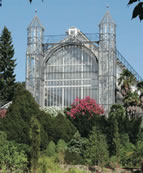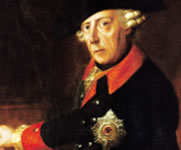Universal Themes
Contact
Magical flowers and enchanting plants
Anyone overwhelmed by a yearning for tropical forests and exotic plants should visit one of Germany's many botanical gardens, leaving the miserable concrete jungle behind and discovering the fascination of strange and often mysterious flora and fauna. Botanical gardens are not just places where visitors can immerse themselves in alien worlds of exotic beauty, but also provide an environment for studying rare and endangered species of plant which are collected and recultivated under the close supervision of experts.
Palmengarten botanical gardens, Frankfurt am Main

Show on map »
Botanical gardens, Berlin-Dahlem

Show on map »
Wilhelma zoological and botanical gardens, Stuttgart
These gardens in Stuttgart are a delightful combination of exotic plants and modern zoo keeping. Built in 1850 for King Wilhelm I of Württemberg, the Wilhelma zoological and botanical gardens are now one of Germany's most bio-diverse zoos with a cross-section of animals from all of the earth's climatic zones. The collection of plants, which covers around 5,000 different species, is also exquisite. The appearance of the park changes constantly with the seasons, so that visitors can always enjoy a wealth of new impressions.
Another highlight is the famous aquarium, which covers a range of natural landscapes from a Black Forest stream to the Amazon rainforest and a South Pacific island.
Show on map »
Show on map »
Travel Planner
Select an option...
Location
- Palmengarten botanical gardens, Frankfurt am Main
- Botanical gardens, Berlin-Dahlem
- Wilhelma zoological and botanical gardens, Stuttgart



